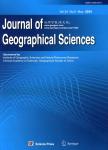Global virtual-land flow and saving through international cereal trade
基于国际谷物贸易的全球虚土流动与节约(英文)作者机构:School of Humanity and Law Northeast University Department of Geosciences Texas Tech University Department of Urban Planning and Design University of Hong Kong
出 版 物:《Journal of Geographical Sciences》 (地理学报(英文版))
年 卷 期:2016年第26卷第5期
页 面:619-639页
核心收录:
学科分类:12[管理学] 1204[管理学-公共管理] 082802[工学-农业水土工程] 08[工学] 0828[工学-农业工程] 120405[管理学-土地资源管理]
基 金:National Social Science Foundation of China No.15CGL078
主 题:virtual land land saving land flow international cereal trade
摘 要:With intense urbanization and sustained population growth, securing food production with limited land sources has increasingly become a pressing issue. Based on an analysis of international cereal(i.e., barley, buckwheat, maize, oats, rice, rye, sorghum, soybean, and wheat) trade and differences in yields of the cereal between export and import countries over the period of 2007 to 2011, we explore the great potential of land saving through the international cereal trade. By ‘land saving , we refer to the reduced global total of lands required to produce a necessary amount of cereal when cereal is exported from a country with relatively large yield of the cereal to a country with relatively small yield of the cereal. Our scenario analysis suggests that international cereal trade would help mitigate the shortage of domestic arable land for many island countries(e.g., Japan) and countries in the arid Middle East and North Africa(e.g., Syria and Morocco). Furthermore, international cereal trade has the potential to generate ‘land saving of 50,092,284 ha of land per year, which is roughly the size of Spain. Drawing upon the definition of a similar concept – virtual water(Hoekstra and Hung 2002), we define virtual land as the area of land resources used for the production of goods. Through introducing the concept of virtual land, we believe land resources that are traditionally considered as stationary resources can flow with anthropogenic socioeconomic activities. The largest virtual-land flows( 3,000,000 ha/year) exist between the United States(US) to China, Brazil to China, the US to Japan, the US to Mexico, and Argentina to China. However, not all virtual-land flows necessarily result in land saving. Thus, more endeavors are needed to plan the virtual-land flows for a larger land saving at the global scale.



